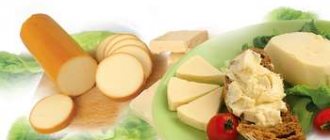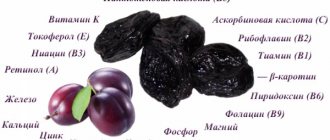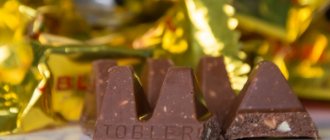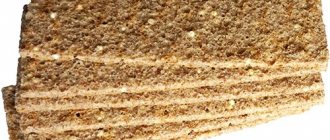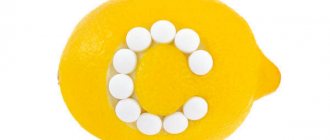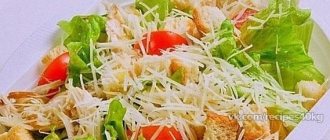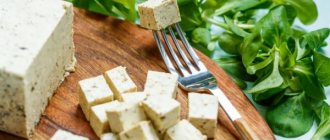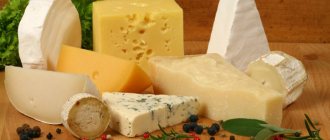Adyghe cheese is a soft brine cheese made from cow's milk. For its production, they do not use rennet (produced in the rennet glands of mammals), but a soft fermented milk starter. This makes the cheese accessible to vegans and vegetarians.
The taste and structure of the product are neutral, and therefore suitable for any dish. You can make a simple sandwich from bread and a piece of Adyghe cheese or add the product to soup, open/closed pie, salad, pizza, khachapuri, roll, puff pastry. The cheese is dense enough so as not to fall apart during rapid frying, but moderately soft so as not to spoil the structure of the baked goods.
The quality of dairy products is regulated by GOST, which strengthens the product’s position in the market. How to prepare Adyghe cheese and is it safe to include it in your daily diet?
General characteristics of the product
Content:
- General characteristics of the product
- Varieties of dairy product
- Chemical composition
- Use in cooking
- Features of industrial production
- How to make Adyghe cheese at home
- How to choose and store the product correctly
Adyghe or Circassian cheese is a national dish of the Circassian culinary tradition [1]. Its name was formed due to its territorial affiliation. The first industrial batches of cheese were produced in the Republic of Adygea by the Circassian population [2]. Cheese bars were made from whole goat or cow's milk. Later, as the industry became larger and more influential, producers switched to cow's milk to reduce the cost of production [3].
The product belongs to the category of soft cheeses without ripening. It has a muted sour milk taste, delicate texture and neutral aroma. There are only 2 variations of industrial dairy products: smoked and fresh. In the photo and even on store shelves, Adyghe cheese can easily be confused with mozzarella, feta cheese, ricotta, mascarpone or feta. But the main difference between the product produced by the Circassian people is pasteurization. The milk mixture is subjected to heat treatment, then fermented milk whey is introduced and the milk protein is allowed to precipitate. The external shape of the cheese is made primarily in the shape of a cylinder with convex side surfaces and rounded edges.
The taste of the product is clean, spicy, fermented milk. A sophisticated consumer will notice the specific taste of pasteurization and the subtle salty taste of whey protein. Its structure is moderately delicate, but not loose. The shade can vary from snow-white to light yellow. GOST allows individual cream spots on the surface of the bar and sections [4]. Adyghe cheese does not have a crust. Small slot-like voids and slight layering are allowed on the surface.
Low-fat cheeses on a diet
Today you can find a huge number of different varieties of cheese on sale. They are produced using different technologies from goat, cow, horse, camel and sheep milk. Thanks to this, they have different tastes and smells. You need to be able to choose the right fermented milk product suitable for your diet. Nutritionists have different opinions about which types of cheese are most suitable for a diet. When purchasing, it is important to pay attention not only to the fat content percentage, but also to the number of kilocalories contained in 100 g of the finished product.
Solid
If you decide to lose weight, use solid low-fat varieties of fermented milk product for your diet. Most of them have high energy value, but in small quantities they do not contribute to the accumulation of fat deposits. Hard cheeses contain lecithin, which accelerates lipid metabolism, promotes the breakdown of fats and lowers cholesterol levels. On a diet you can eat the following varieties:
- Russian. It has the shape of a cylinder, yellow color, slightly sweetish creamy taste. By consistency it belongs to semi-solid low-fat varieties. Its calorie content is about 360 kcal/100 g, fat content is 50%. Often used for preparing snacks, pizza, roasting meat, fish, vegetables, etc.
- Swiss. It has the shape of a low cylinder, white or light yellow color, a pronounced aroma and a sweetish, slightly spicy taste. In the thickness of Swiss cheese there are oval or round eyes. The fat content of the product is 45%, calorie content is 380 kcal/100 g. This variety is often used for preparing soups, batters, casseroles, pies, and sandwiches.
- Parmesan is a low-fat diet cheese with a brittle, crumbly structure, a specific smell, delicate taste and a spicy aftertaste. It is consumed as an independent dish, added to soups, salads, and pizza. Parmesan is delicious paired with balsamic vinegar. Contains 32% fat, 292 kcal/100g.
- Cheddar (33% fat, 380 kcal/100g). It has a plastic consistency, yellowish color, nutty taste with a slight sour taste. It is considered beneficial due to the protein, calcium, phosphorus, amino acids, vitamins and minerals it contains. Low-fat Cheddar cheese is used to prepare toasts, salads, soups, sauces and fondues.
- Dutch. It has a milky taste with a slight sweetish or, conversely, sourish (depending on aging) taste, white or pale yellow color, dense structure with eyes of different shapes. Dutch low-fat cheeses go harmoniously with apples, grapes, and white wine. Fat content – 45%, kilocalories – 345/100 g. Can be consumed in small quantities during a diet.
- Gaudette. Semi-solid, low-fat, allowed during a diet. Contains 199 kcal/100 g and a lot of calcium, the proportion of fat is 7%. It has a mild piquant taste and is used for preparing appetizers, hot first and second courses.
Soft
Nutritionists also recommend using soft, low-fat cheese for your diet. The most popular varieties are:
- Oltermani (fat content 5-10%, 270 kcal/100 g). It has a milky taste and a sweet and sour aftertaste with a slight bitterness, a uniform texture with holes of almost the same size. Thanks to its delicate taste, minimal amount of salt and unobtrusive aroma, Oltermani is used for preparing sandwiches, salads, first and second courses, and fruit salads.
- Chechil is a fibrous, low-fat cheese variety suitable for diets. It is made in the form of threads collected in a bundle or tied with a rope, braid, or ball. Often sold smoked, it has a pungent flavor and is white or light yellow in color. Contains 5-10% fat, 253-313 kcal/100 g and a lot of salt. Used for making salads, pizza, pies.
- Fitness Viola Polar (5-10% fat, 250 kcal/100 g) is a low-fat fermented milk product that is popular among those on a diet. Often it contains yogurt instead of fat, making it even more beneficial for weight loss. It has a rich milky taste with the taste of additives that are often present in it: mushroom, chocolate, ham. Sandwiches and salads are prepared with Fitness Viola Polar.
- Low-fat Mozzarella cheese contains protein, phosphorus, calcium and fatty acids. Its fat content ranges from 17 to 24%, calorie content - 149-240 kcal/100 g. It is sold in the form of white balls in a salty solution and has a milky taste. Mozzarella is combined with pepper, basil, tomatoes, olive oil.
- Ricotta is a low-fat cheese made not from milk, but from whey without adding salt. Its fat content is 9-18%, calorie content is 174 kcal/100 g. The consistency of the product is loose with a sweetish aftertaste. Ricotta goes well with broccoli, fruit, salmon, basil, ham, and pasta.
- Feta. It is prepared from sheep's milk and has a fat content of 60% (290 kcal/100 g), but it can also be dietary, containing 30% fat, if goat's milk is used for its production. The second version of Greek cheese is suitable for diet. The color of Feta is white or cream, the texture is loose, the smell is curd. The taste depends on the variety and can be mild, creamy, salty or spicy. Combines with vegetables, herbs, vegetables, seasonings, and is often used to make salads.
Varieties of dairy product
Important: industrial Adyghe cheese can be found throughout the post-Soviet space. Recipes may differ in each country. Moreover, a similar product can be sold under different trade names [5]. Be careful before purchasing.
Homemade Adyghe cheese, unlike industrial cheese, can be found in 3 different variations: fresh, dried and smoked. Fresh is practically no different from what is sold on supermarket shelves. However, a homemade product may contain rennet. If its presence/absence plays an important role for you, then be sure to check the information with the seller.
Smoked Circassian cheese has several names: red, Armavir or Kabardian. The product has gained particular popularity in the western part of the North Caucasus. It is smoked for several days until the crust becomes dense and impenetrable to bacteria or air. The shelf life of smoked dairy products is 6 months.
Dried Adyghe cheese is very similar to local kurt (fermented milk cheese balls). Since ancient times, this product served as food for shepherds, warriors and hunters. Dried cheese is very salty and hard. It retains only 20% moisture and 2% salt. Locals dry the bars in the shade, after which they are poured into huge boxes, covered with a layer of grain and sent to a barn with a stable temperature and stable humidity. Its shelf life can reach several years.
Interesting: before use, the dried head is doused with boiling water or dipped in boiling water. The product instantly becomes soft and pliable, but its structure is still denser compared to classic Adyghe cheese.
Selection and storage
Circassian cheese will be healthy and tasty when it is made with high quality. To do this, it is important to choose it correctly. There is a list of criteria that you should pay attention to. The following are highlighted:
- Appearance and color. Ideal - light cream. Slight cream pigmentation is allowed. If there is a crust, then it is stale. Stains, stains and mold are a sign of poor storage,
- Consistency. A high-quality and healthy product will be soft, curdled, and crumble a little. Dry and dense ones are not worth buying,
- Taste. Pleasant, soft, slightly salty. There should be hints of whey protein. A sour or pungent smell and taste is a sign of a spoiled product,
- Package. It indicates the date of manufacture and expiration date. The container must be intact and vacuum sealed. If Adyghe cheese is not smoked, then storage is no more than 15 days.
The product should be stored in a glass container that has a closing lid. It is needed to protect against foreign odors. Some are stored in a container. A little sugar is placed in it to serve as an absorbent. It should be stored in this condition for a maximum of 3 days.
The note! When smoked, it can last for more than a month without loss of quality.
Chemical composition
Important: the product is prepared on the basis of pasteurized milk, whey and table salt. It is classified as a dietary food with high nutritional value and rich nutrient composition [6]. The mass fraction of fat in dry matter is 40%.
Nutritional value per 100 grams
| Calorie content [7] | 264 kcal |
| Squirrels | 19.8 g |
| Fats | 19.8 g |
| Carbohydrates | 1.5 g |
| Alimentary fiber | 0 g |
| Water | 56 g |
| Alcohol | 0 g |
| Cholesterol | 54 mg |
| Ash | 2.8 g |
Vitamin composition (in milligrams per 100 grams)
| Retinol (A) | 0,213 |
| Beta-carotene (A) | 0,1 |
| Tocopherol (E) | 0,3 |
| Ascorbic acid (C) | 0,2 |
| Thiamine (B1) | 0,04 |
| Riboflavin (B2) | 0,3 |
| Niacin (B3) | 0,3 |
| Nicotinic acid (PP) | 5,7 |
Concentration of minerals (in milligrams per 100 grams)
| Macronutrients | |
| Potassium (K) | 70 |
| Calcium (Ca) | 520 |
| Magnesium (Mg) | 25 |
| Sodium (Na) | 470 |
| Phosphorus (P) | 360 |
| Microelements | |
| Iron (Fe) | 0,6 |
Mozzarella – 160-280 kcal, fat content – from 17 to 24%, proteins – 28 g
Italian mozzarella, purely formally, is in fourth place in our ranking. In fact, it shares the same position with feta, since its fat content can reach the same 24%. But if you try, you can find a more dietary product with 17% fat content.
What's good about mozzarella? This young, tender cheese goes well with almost all vegetables, herbs and even berries. Like any natural cheese, mozzarella is rich in phosphorus and calcium, contains easily digestible protein and healthy fatty acids. However, it is worth noting that mozzarella is not a source of beneficial lactic acid bacteria: milk for it is fermented using rennet enzymes, without additional microflora.
! Natural mozzarella has a very short shelf life - 5-7 days.
If the label indicates an expiration date of more than a week, preservatives have definitely been added to such mozzarella.
Use in cooking
Adyghe cheese is eaten as an independent snack or added to the following dishes:
- vegetable salads;
- rolls;
- pizza, khachapuri;
- soups;
- vareniki;
- cheese masses;
- pies and pies;
- cheese sauces;
- wrapped in puff pastry, lavash.
Fried cheese is especially popular. The structure of the product allows it to be subjected to all types of heat treatment. It can be fried in a regular frying pan or on the grill to give it a specific smoky flavor. Fry the cheese in a drop of vegetable oil for 1 minute on each side until a thick crust forms.
Fresh Adyghe cheese can replace suluguni, mozzarella and other types of soft dairy products [8]. Dried, it is best to grate into pasta, scrambled eggs or salad. You can prepare dried Circassian bars at home: leave the fresh product unpacked in the refrigerator, covering the surface with a linen napkin. In a month, dried Adyghe cheese will be ready.
Tofu – 72-90 kcal, fat content up to 5%, proteins – 8 g
I’ll also say something about soybean cheese – tofu. Yes, it has the lowest fat content among all the cheeses I have listed and should be in first place, but there is one “but”: tofu promotes excessive gas formation, and therefore in case of gastrointestinal diseases you need to eat it in very limited quantities.
For the rest of the tofu there is no price. It is an antioxidant that removes dioxin, which causes cancer, from the body, and also reduces the level of “bad cholesterol”. At the same time, tofu is not just a dietary product, but a super dietary product: calorie content - 73 kcal, proteins - 8 g, fats - 4.5 g, carbohydrates - 0.8 g. So occasionally, for variety, you can indulge in tofu. Adding it to salads is a nice thing, I tell you.
To summarize: Adyghe cheese and ricotta fit best into the criteria of the fifth diet. They are not salty, not fatty, do not contain much protein and are great for breakfast. Just what the doctor ordered. Just don’t forget to count calories every day (it’s easier to do this with our calculator) and take hepatoprotectors. Like diet, it is an integral part of a liver recovery program.
Features of industrial production
Interesting: cheese became a brand in 1980. It was during this period that its industrial production began. Since then, a cheese festival has been held annually in the city of Maykop (Republic of Adygea). During the holiday, locals organize themed fairs, dress up in ethnic outfits, and prepare many varieties of cheese.
How is the product prepared [9]? The milk mixture is heated to 95°C, after which fermented milk whey is introduced. Once the whey has curdled, the milk curds are collected in willow baskets. These baskets leave a beautiful, recognizable pattern on the sides of the Adyghe cheese. The head is formed in the same basket. This manufacturing method allows you to preserve the nutritional properties of the product and additionally disinfects it. The output is low cheese cylinders. Their weight does not exceed 2 kilograms. Their surface is convex and the edges are rounded. The ideal cylinder is stable and elastic when pressed, and the inside is tender and soft. The aroma of the product is very reminiscent of baked milk with a subtle sour taste.
Important: the price of the finished product may vary depending on the quality of the raw materials and the authority of the manufacturer [10]. The average market value is $6-10/1 kilogram.
Alternative
What to do if you couldn’t find Adyghe cheese on sale? During a diet, it can easily be replaced with similar varieties with a low fat content, carbohydrate content and low calorie content. This is curd cheese ricotta, mozzarella, tofu, feta cheese. Feta is also very tasty; it has a little more calories (290 kcal), but contains almost no carbohydrates, and therefore does not cause weight gain. That is, these varieties can be eaten in the morning, afternoon and evening, without fear of gaining weight. Among them, Adyghe cheese is the most affordable. It is for this reason that it does not sit on the shelves and is most often fresh.
How to make Adyghe cheese at home
We will need:
- cow's milk - 2 liters;
- fermented milk product to taste (kefir/whey/yogurt) – 3 liters.
Best materials of the month
- Coronaviruses: SARS-CoV-2 (COVID-19)
- Antibiotics for the prevention and treatment of COVID-19: how effective are they?
- The most common "office" diseases
- Does vodka kill coronavirus?
- How to stay alive on our roads?
Preparation
Bring the milk to a boil, pour the fermented milk product into it and mix thoroughly several times. After some time, curd flakes will appear on the surface. As soon as this happens, turn off the heat. After a few minutes, the flakes will disappear and the serum will take on a clear or slightly greenish tint. Pour the finished mixture into a colander/sieve/special mold for making cheese. After 10 minutes, turn the mixture over and leave for 10-12 hours until the whey has completely drained.
The finished cheese can be salted or soaked in a solution of salt and spices, but this is optional. Brine solution recipe: 1 tablespoon whey + 3 tablespoons salt. Soak the cheese for 2-5 days, depending on the desired saltiness of the product. The aged mass must be placed in the refrigerator for 2-3 days, after which the snack is considered ready.
